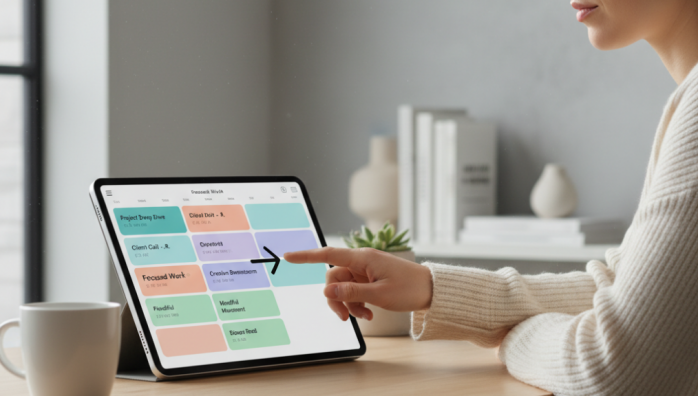Implementing Time Blocking for Focused Workdays
by admin in Productivity & Tools 19 - Last Update November 16, 2025

I used to end my workdays feeling completely drained, yet when I looked at my to-do list, I’d barely made a dent. My calendar was a chaotic mess of meetings, but the actual \'work\' was supposed to happen in the mythical gaps in between. It was a recipe for constant context switching and anxiety. When I first heard about time blocking, I was skeptical. It sounded rigid, suffocating even. But after hitting a wall with my productivity, I decided to give it a genuine try, and honestly, it transformed my relationship with my workday.
What time blocking actually feels like
Forget the textbook definitions. For me, time blocking is simply making an appointment with a task. Instead of a floating list of things I \'should\' do, I give every single task a home on my calendar. This includes deep work, checking emails, taking breaks, and even commuting. It’s not about controlling every minute, but rather making a deliberate plan for how I want to invest my time. It’s the difference between letting your day happen to you and telling your day what you need from it.
My step-by-step process for getting started
It took some trial and error, but I’ve landed on a simple process that works for me. It’s not about perfection; it’s about creating a realistic roadmap for the day ahead.
Step 1: The pre-flight check - a daily brain dump
Before I even look at my calendar, I spend 10 minutes listing everything that needs to get done. I use a simple notepad for this. It’s a crucial step because if I try to schedule tasks while they’re still swirling in my head, I’m guaranteed to forget something important. Getting it all on paper first clears my mind for the planning phase.
Step 2: The reality check - estimating my time
This is where I made my biggest mistake initially. I would optimistically assign 30 minutes to a task that, in reality, needed 90. The result? A perpetually broken schedule and a feeling of failure by 11 AM. I had to learn to be brutally honest with my time estimates. My rule now is to estimate how long I think a task will take, and then I add 25% to it. This simple buffer has been a game-changer.
Step 3: Building the blocks in my digital calendar
With my list and my realistic time estimates, I open my digital calendar. I create an event for each task and give it the time it needs. I find color-coding is incredibly helpful. For instance:
- Blue: Deep, focused work (e.g., writing this article).
- Green: Administrative tasks (e.g., email, invoicing).
- Orange: Meetings and calls.
- Gray: Breaks, lunch, and personal time.
This visual system lets me see at a glance if my day is balanced or if it\'s all meetings and no actual \'doing\'.
Step 4: The secret weapon - scheduling the \'nothing\' block
The most important block on my calendar is the one I label \'Flex Time\' or \'Buffer\'. I usually schedule a 30-45 minute block in the late afternoon. This is my safety net. It’s for the unexpected phone call, the task that ran over, or simply for catching my breath. Before I started doing this, my entire day would shatter with one small interruption. Now, I have a dedicated space to handle life\'s curveballs.
What I learned after a month of time blocking
The first week felt strange. I felt a bit rebellious against my own schedule. But by the second week, something clicked. The constant \'What should I be doing now?\' anxiety disappeared. Because the decision was already made, I could pour all my mental energy into the task at hand. I realized time blocking isn\'t about being a robot; it\'s about creating the structure necessary for focus and creativity to flourish. It’s a practice, not a perfect science, and giving myself the grace to adjust the blocks as the day unfolds was the final piece of the puzzle.














